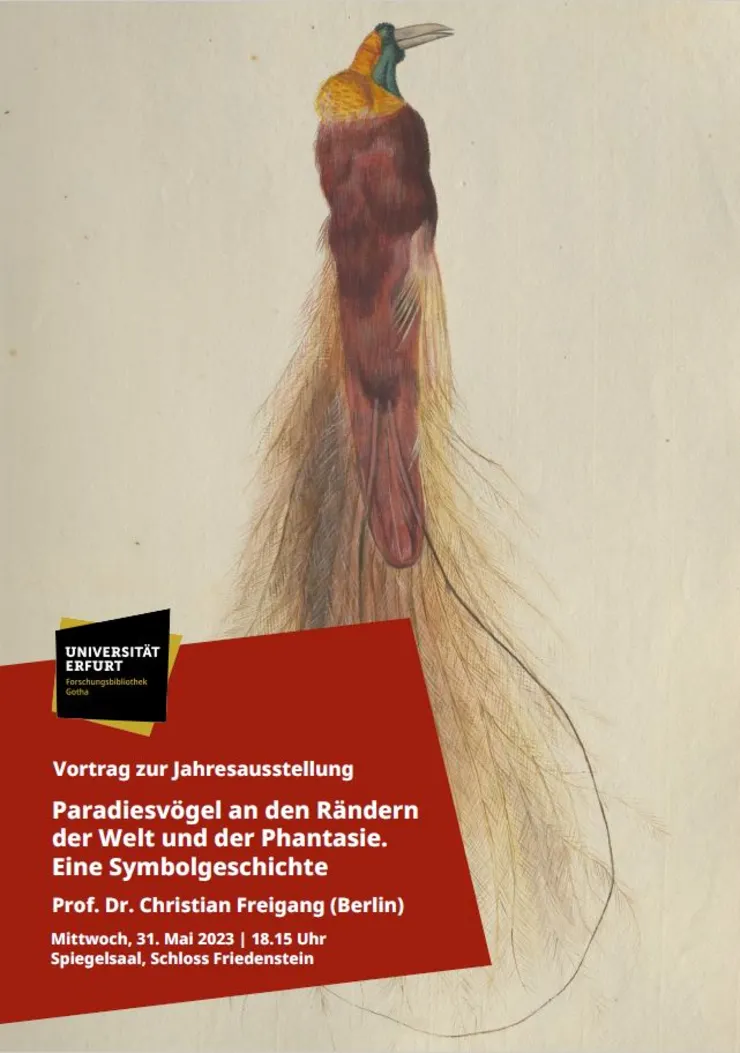Public Lecture: "Birds of Paradise at the Edges of the World and Imagination - a Symbolic History".
When stuffed birds of paradise arrived in Europe at the beginning of the 16th century, they were immediately prized as highly valuable collector's items. They seemed to come from the place where the earthly paradise was assumed to be at the edge of the world, together with its wonderful fauna and flora in the legendary Chatai, today's China. Here, in the distant Orient, had to be the origin of the world - the paradise - to which in the West corresponded the place of the Last Judgment: hence the name of the birds. But the variety of meanings of the wonderful, colorful birds can be determined much earlier, because already in the Middle Ages people firmly believed in birds of paradise, imagined them as supernatural - without body and weight as pure color floating in the air: a bird of God! The self-evident claim to rule over these new territories as a Christian ruler was also based on such ideas. In this respect, the birds from the "West Indies" were not regarded as ethnographic documents, but as confirmations of biblical messages and of the Christian cosmos of salvation, which, as it were, provided a glimpse into the promised land.
Seen from today, it is curious that these mythical ideas of the birds of paradise were then fully confirmed by the overseas voyages around 1500: pure feathers in fantastic colorfulness, and so for a long time the ideas of the wonderful and exotic edges of the world were mixed with the ornithological descriptions as well as the artistic decoration and the presentation of the beautiful birds. This was confirmed by the colorful birds discovered at the similar time and the colorful feather decorations on the other edge of the world, namely in Central and South America. The lecture by Berlin-based art and architecture historian Prof. Christian Freigang will trace these overlaps of mythical associations and ornithological curiosity at the turn of the Renaissance and discuss images of these transformations.

